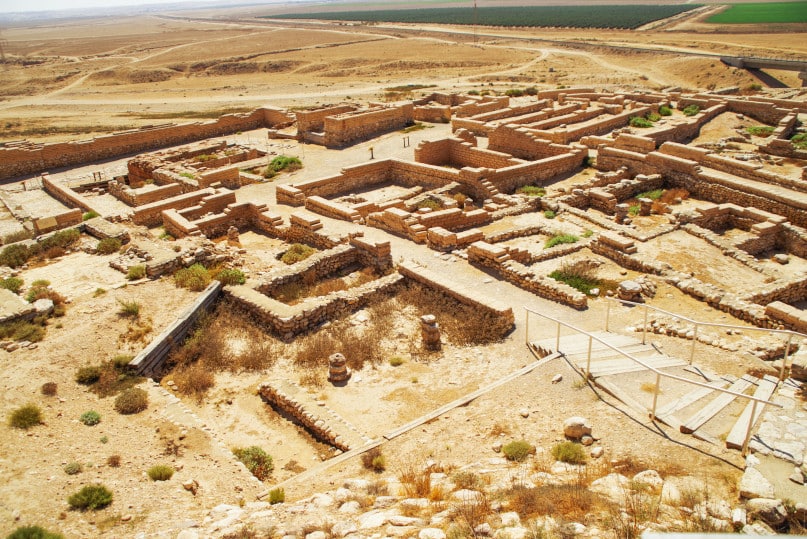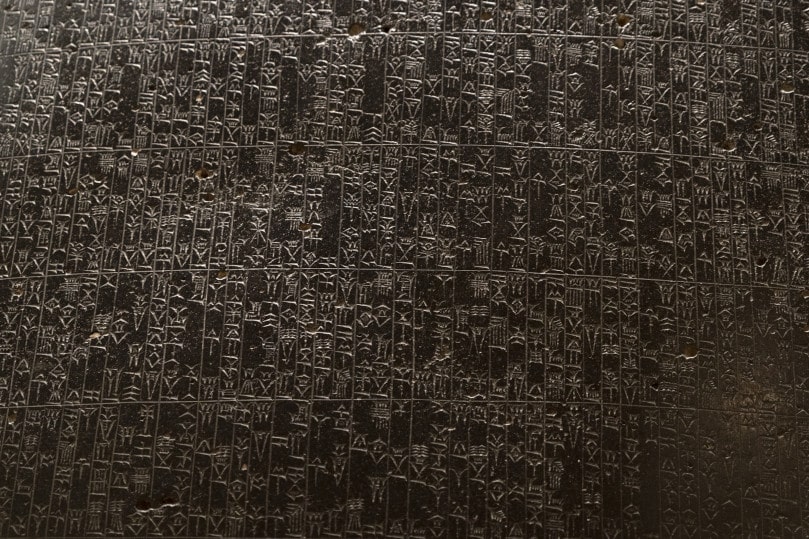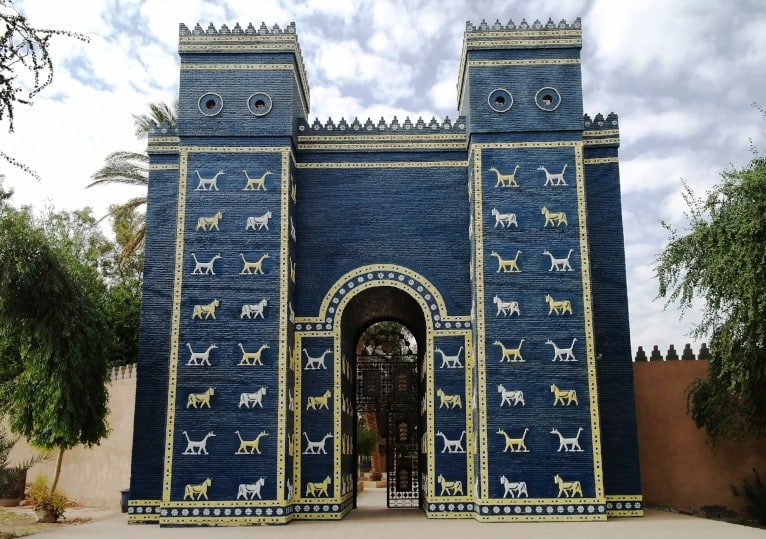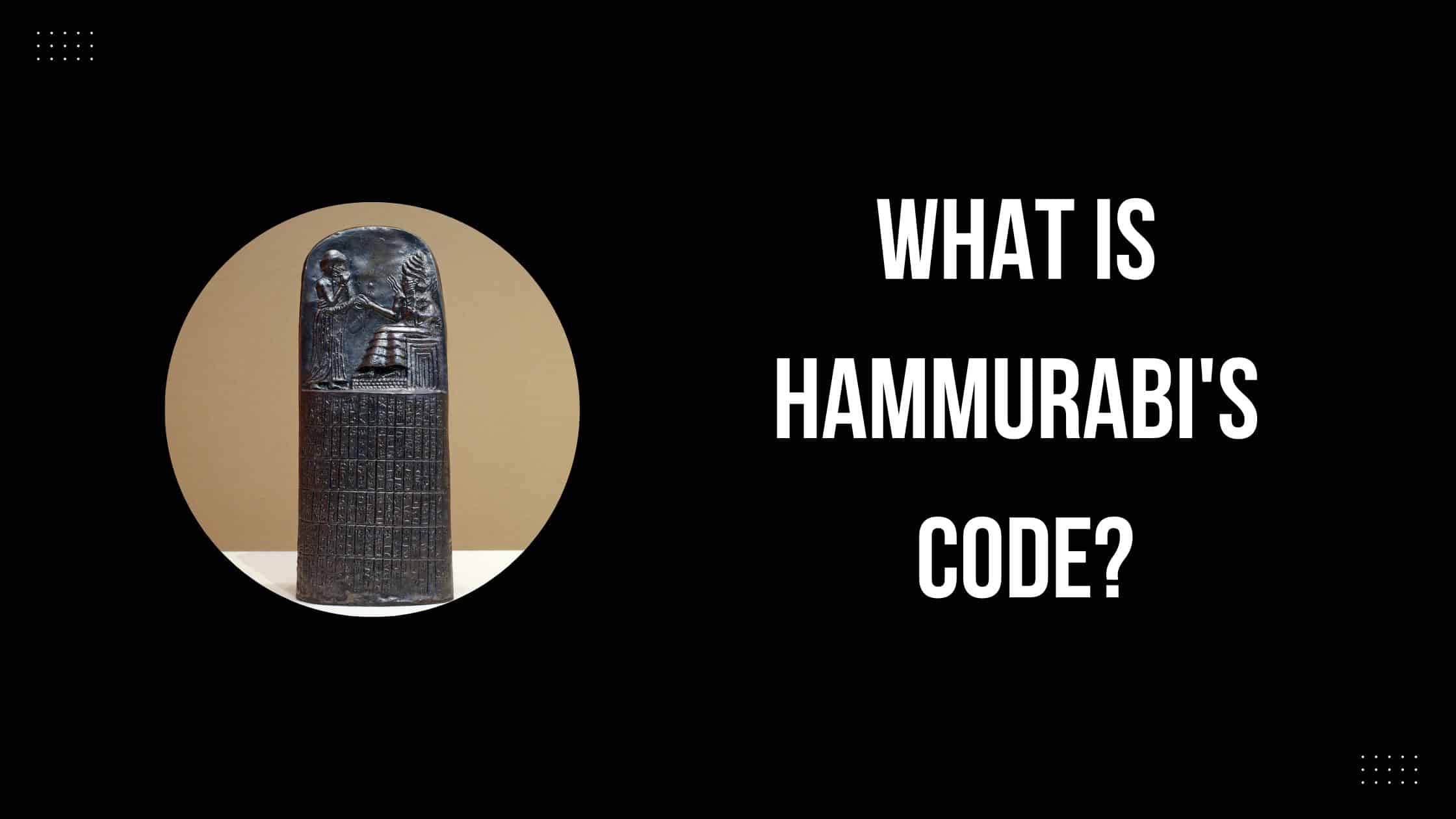Table of Contents
ToggleA Pillar of Justice
Hammurabi’s Code is one of the oldest documents ever discovered. Hammurabi, the sixth Amorite king of the Old Babylonian Empire, compiled hundreds of laws into one model legal code to be used for the kingdom.
Many nations have used Hammurabi’s Code as a model for their justice systems.
While numerous laws and suggested ramifications may seem strict by today’s standards, they were revolutionary at the time for their “eye for an eye” approach to justice.
How Was It Recorded?
Hammurabi’s Code – sometimes referred to as the Code of Hammurabi – is a set of laws that originated from ancient Babylonia. These laws were carved into a stele, or large stone pillar, and remained undiscovered until 1901.

The stone stele is estimated to date back to around 1750 BC, although most scholars believe the law code inscribed dates back even earlier.
The pillar contains approximately 282 laws regarding property, personal injury, wages, and even physician malpractice.
The top of the stele features a relief of King Hammurabi, who was king of Babylon at the time of the stone’s carving. He is depicted alongside Samash, the Babylonian god of justice.
In Ancient History
The stone pillar dating back to 1750 BC represents the best and most complete depiction of Mesopotamian law.

However, the legal code itself was in use far before then. Earlier versions of the code were discovered in various locations across the region, many of them written in ancient Sumerian.
Hammurabi’s Code was written in Akkadian, and many scholars estimate it to be a revised, more complete compilation of earlier laws.
Surviving documents from later years in Babylonian history appear to be copied from Hammurabi’s Code, suggesting that it was used as a reference throughout ancient history.
How Was Hammurabi’s Code Discovered?
Hammurabi’s Code was discovered in present-day Iran at the turn of the 20th century. The stone structure was uncovered at an archaeological dig in the remains of the ancient city of Susa.

Several large fragments of the stone were discovered buried in the remains of the Acropolis. They were in relatively good condition and able to be pieced together, although the elements eroded off the last few lines.
It’s unclear how Hammurabi’s Code got to Susa and why it was displayed there. One leading theory is that it resulted from plunder towards the end of Hammurabi’s reign in ancient Babylon.
The Justice System According to Hammurabi
Hammurabi’s Code contains a number of conditional statements. The laws declare that if a certain action occurs, then a certain punishment will be meted out.
The code itself revolves around the concept of “an eye for an eye.” In fact, the origin of this common phrase can be attributed to Hammurabi’s Code.

The first half of the laws pertain to general justice, property, irrigation, trade, and family law. Many of the laws regulate commerce and trade by setting interest values and good faith agreements.
Other laws address crime, often calling for the death of the accused. For instance, law 53 asserts that any man caught stealing from another should be put to death, and any man caught receiving those stolen goods should also be put to death.
While these punishments may be excessive by today’s standards, they reflect a number of similarities in modern law. In United States law, recipients of stolen goods can be charged with a misdemeanor or felony, depending on the circumstances.
An Early Day Family Court and More
The second half of the legal code pertains to family, personal injury, physicians and malpractice, building code, and property and wage resolutions. The complexity of these laws and the situations described therein indicate how advanced this ancient society was.

Of all the laws described in Hammurabi’s Code, law 196 is arguably the most famous: it asserts that if a man takes the eye of another man, then his eye shall be taken as well.
Cruel and unusual punishment
While Hammurabi’s Code is often revered as an early example of justice in societies, it is not without controversy. Many of the laws pertaining to slavery, women being treated as property, and punishments that today would be defined as cruel and unusual.
For instance, according to law 117, a man can sell his wife, son, and daughter for money, but they must be released from slavery after four years.

Get Smarter on US News, History, and the Constitution
Join the thousands of fellow patriots who rely on our 5-minute newsletter to stay informed on the key events and trends that shaped our nation's past and continue to shape its present.
Law 110 asserts that if a priestess is caught entering a wine shop, she shall be burned to death.

Progressive law
Still, some laws are arguably more progressive than scholars previously thought for these ancient societies.
Law 138 outlines the process for a divorce. It suggests that if a husband decides to divorce his wife (under the conditions that there was no infidelity or offenses involved), and they have not had any children together, then he must pay her back her dowry, and then he may be granted a divorce.
While Hammurabi’s Code was far from perfect, it certainly provides an interesting glimpse into a Babylonian society that may not have been as primitive as we once believed.
Ancient History, Modern Justice
Today, the Code of Hammurabi is displayed at the Louvre Museum in Paris, France. References to Hammurabi and his code can be seen throughout modern society. Most notably, a replica of the stone structure is on display at the United Nations headquarters in New York City.

The answer to the question, “what is Hammurabi’s code?” isn’t an easy one to answer. The stele itself isn’t a complete representation of all the laws in ancient Babylon, as many of them on the stone pillar was lost to time and the weathering process.
Additionally, scholars have gleaned that many of the laws had long been in practice, but this was the first complete compilation of them.
Fortunately, numerous documents were copied from the stele over the course of history. Through these documents, the complete Code of Hammurabi can be pieced together as it was used during King Hammurabi’s reign.
Many scholars note the importance of Hammurabi’s Code throughout history, indicating that it set the standard for the completeness and fairness of the modern justice system.
Hammurabi’s Code strongly influences the laws of many nations, including the United States. For this reason, the United States Capitol even features a relief of the ancient king in its halls.











